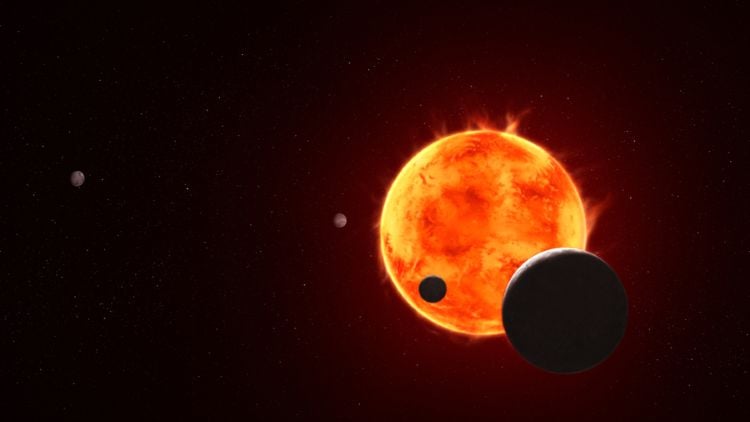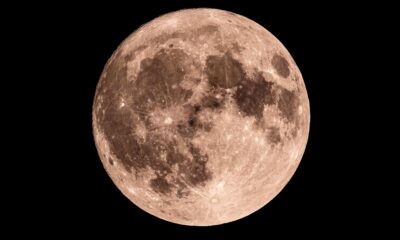Science
Scientists Explore Biosignatures in Exoplanet Atmospheres

Researchers have recently submitted a manuscript that investigates the potential for discovering life within the clouds of exoplanet atmospheres. This study aims to identify the biosignatures of microbial life, which could significantly enhance our methods of detecting extraterrestrial organisms. By exploring how these biosignatures can be recognized in the atmospheres of distant planets, the team opens new avenues for astrobiological research.
The study involved a series of laboratory experiments focusing on seven airborne microbial strains collected from Earth’s atmosphere. Among these were strains related to Modestobacter versicolor, Roseomonas vinacea, Micrococcus luteus, Massilia niabensis, and Curtobacterium aetherium. The researchers employed spectroscopy to analyze the reflected light from these samples, also known as spectral features, to determine whether they could serve as indicators of biosignatures in exoplanetary atmospheres.
The findings revealed that each microbial sample displayed unique biosignatures, which could potentially be identified in the clouds and atmospheres of exoplanets. The authors concluded, “Here, we present an additional path for searching for life on Earth-like exoplanets: the search for biopigments as signs of life in clouds.” This research provides a crucial spectral reference to guide the detection and interpretation of potential biosignatures in the reflected light of Earth-like exoplanets during future missions.
Historical Context and Future Missions
The study draws inspiration from a 1976 investigation by renowned astronomer Dr. Carl Sagan and astrophysicist Dr. Ed Salpeter, who theorized about the possibility of life in Jupiter’s clouds. They proposed four types of organisms that could exist within the gas giant’s atmosphere: “Sinkers,” “Floaters,” “Hunters,” and “Scavengers,” each adapted to specific ecological niches.
Another significant motivation for this research is the upcoming Habitable Worlds Observatory (HWO), a planned space telescope set for launch in the 2040s. HWO aims to utilize spectroscopy to observe and analyze 25 habitable exoplanets for biosignatures. This raises the question of whether the biosignatures identified in this study could be detectable by HWO. The observatory’s broader mission will also include studies on galaxy growth, star formation, and various solar system objects.
NASA’s James Webb Space Telescope (JWST) has already made strides in exoplanet research. It has successfully observed several exoplanet atmospheres, such as WASP-39 b and WASP-17 b, located around 700 and 1,324 light-years away from Earth, respectively. For WASP-39 b, JWST identified water, carbon dioxide, and carbon monoxide in its atmosphere, while WASP-17 b showed the presence of quartz particles at high altitudes.
Most recently, JWST has published findings in *The Astrophysical Journal Letters* regarding the atmosphere of TRAPPIST-1 e, an Earth-sized exoplanet within its star’s habitable zone. The results from these observations did not confirm the existence of a substantial atmosphere but emphasize the need for further research to verify such findings. The TRAPPIST-1 system is approximately 41 light-years away and consists of seven known Earth-sized planets, three of which orbit within the habitable zone.
As researchers continue to explore the potential for life in exoplanet atmospheres and clouds, the implications of this study offer a promising trajectory for future investigations. The integration of laboratory findings with observational data from advanced telescopes could lead to significant breakthroughs in our understanding of life’s potential beyond Earth. As these explorations unfold, the scientific community remains engaged, eager to uncover new insights into the vast possibilities of extraterrestrial life.
-

 World2 weeks ago
World2 weeks agoGlobal Air Forces Ranked by Annual Defense Budgets in 2025
-

 World2 weeks ago
World2 weeks agoMass Production of F-35 Fighter Jet Drives Down Costs
-

 Top Stories2 weeks ago
Top Stories2 weeks agoNew ‘Star Trek: Voyager’ Game Demo Released, Players Test Limits
-

 Top Stories2 weeks ago
Top Stories2 weeks agoDirecTV to Launch AI-Driven Ads with User Likenesses in 2026
-

 Science2 weeks ago
Science2 weeks agoTime Crystals Revolutionize Quantum Computing Potential
-

 Lifestyle2 weeks ago
Lifestyle2 weeks agoLia Thomas Honored with ‘Voice of Inspiration’ Award at Dodgers Event
-

 Entertainment2 weeks ago
Entertainment2 weeks agoFreeport Art Gallery Transforms Waste into Creative Masterpieces
-

 Lifestyle2 weeks ago
Lifestyle2 weeks agoDiscover Reese Witherspoon’s Chic Dining Room Style for Under $25
-

 Health2 weeks ago
Health2 weeks agoGavin Newsom Critiques Trump’s Health and National Guard Plans
-

 World2 weeks ago
World2 weeks agoElectrification Challenges Demand Advanced Multiphysics Modeling
-

 Entertainment2 weeks ago
Entertainment2 weeks agoFast & Furious Coaster Hits the Track at Universal Studios
-

 Science2 weeks ago
Science2 weeks agoWaning Crescent Moon: What to Expect on October 17









